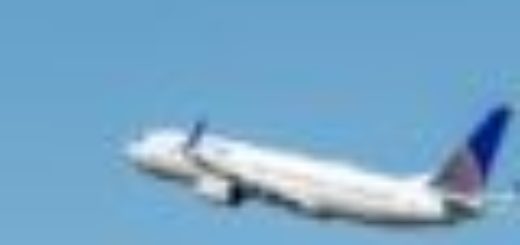Netherlands Transfers F-16 Jets to Romania to Advance Ukraine Training and NATO Defense
{loadposition bannertop}
{loadposition sidebarpub}
On 3 November 2025, the Netherlands handed over 18 F-16s in Romania, establishing Fetești as a long-term training hub for Romanian and Ukrainian pilots. The move shifts NATO’s eastern-flank training from ad hoc rotations to a permanent pipeline supporting Ukraine’s combat integration and Romania’s airpower growth.
On 3 November 2025, the Netherlands formally transferred 18 F-16s operating in Romania to the Romanian authorities, locking in the European F-16 Training Center as a long-term hub for Romanian and Ukrainian pilot instruction, as reported by the Dutch MoD. The handover in Bucharest confirms a shift from ad hoc deployments to a standing, multinational training pipeline on NATO’s eastern flank. It matters because it ties Romanian airpower development directly to Ukraine’s F-16 combat integration at a moment when Russia’s air and missile campaign remains intense. The transfer follows the Netherlands’ transition to the F-35 and its parallel donation of F-16s to Ukraine, adding immediate operational relevance to the training mission.
Follow Army Recognition on Google News at this link
The Dutch F-16s are versatile multirole fighter jets capable of precision strikes, air defense, and advanced pilot training within NATO operations (Picture Source: Dutch MoD)
The defense product at the center of this decision is the F-16 Fighting Falcon in its modernized European service configuration, a single-engine, multirole fighter with mature avionics, a deep precision-weapons catalogue, and reliable NATO datalinks. Decades of iterative modernization have kept the type tactically credible in air policing, defensive counter-air, suppression of enemy air defenses, and precision strike. The platform’s value in Romania is not only in its flight performance but in the ecosystem that comes with it: standardized procedures, shared simulators, and common maintenance and munitions across allied users, all of which reduce time-to-combat-effect for new pilots.
Operationally, this transfer caps a two-year sequence. The first five ex-Royal Netherlands Air Force jets began work at the European F-16 Training Center in November 2023; since September 2024, Ukrainian pilots have trained there alongside Romanians. With the formal hand-over on 3 November 2025, Romania becomes the enduring owner-operator of the 18 aircraft used at the center, ensuring continuity of the syllabus and permanence of the cadre. The Dutch MoD emphasizes that Ukrainian aviators trained in this pipeline are already contributing to the defense of their airspace against Russian strikes, underlining the direct operational yield of the training construct.
Compared with the Soviet-era MiG-29 and Su-27 families that formed the backbone of Ukraine’s legacy fleet, the F-16 offers a clearer path to networked warfare: native integration of Western beyond-visual-range missiles, precision-guided munitions, night/all-weather targeting pods, and Link-16-based situational awareness. The maintenance philosophy and spares pipeline are optimized by large allied fleets, which shortens turnaround and improves sortie generation. Against newer European types such as Gripen C or Eurofighter Typhoon, the F-16’s advantage in this specific mission is availability and scale: airframes, instructors, and weapons are already distributed across NATO, allowing an immediate stand-up of training and frontline sustainment. Where Typhoon or Rafale would require longer acquisition and bespoke integration, the F-16 delivers speed to capability, critical when the requirement is to blunt ongoing missile and glide-bomb attacks.
The development path also explains the timing. The Netherlands’ migration to the F-35 freed airframes and instructors to seed the Romanian-based school. That, in turn, allowed The Hague to split its F-16 legacy fleet between a training role in Romania and a combat role in Ukraine. By May 2025, the Netherlands confirmed the full 24-aircraft donation to Ukraine had departed for preparation and delivery, ensuring a steady flow from classroom to frontline cockpit. This dual-track approach, training hub in Romania, operational fleet in Ukraine, compresses the classic training-to-combat lag and gives Kyiv immediate relief while building sustainable capacity.
Strategically, the implications are threefold. First, NATO deterrence by denial on the Black Sea-Carpathian axis is strengthened: Romania gains a durable training and conversion engine to keep its F-16 force credible for air policing, quick-reaction alert, and integration with ground-based air defenses. Second, Ukraine’s airpower transition accelerates, complicating Russian mission planning by increasing the probability of intercepts, improving missile-defense cueing, and enabling selective SEAD/DEAD options that force Russian aircraft to operate farther from the front. Third, the model is scalable. A Romania-hosted, Netherlands-seeded, industry-supported center sets a template for future European training clusters, reducing costs while raising readiness across multiple air forces, a practical expression of allied burden-sharing that Moscow must factor into its calculus.
The bottom line is that formalizing ownership of the 18 training F-16s in Romania converts a successful ad hoc initiative into a standing NATO capability that serves two simultaneous ends: it builds Romania’s fighter force on the alliance’s front line and it keeps Ukraine’s new F-16 units fed with trained pilots who are already proving their worth over a contested battlespace. With 24 Dutch F-16s committed to Ukraine and an entrenched training hub now in Romanian hands, the alliance has created a pipeline from syllabus to sortie that raises the cost of Russian air and missile operations and signals long-term resolve.
Written by Teoman S. Nicanci – Defense Analyst, Army Recognition Group
Teoman S. Nicanci holds degrees in Political Science, Comparative and International Politics, and International Relations and Diplomacy from leading Belgian universities, with research focused on Russian strategic behavior, defense technology, and modern warfare. He is a defense analyst at Army Recognition, specializing in the global defense industry, military armament, and emerging defense technologies.

{loadposition bannertop}
{loadposition sidebarpub}
On 3 November 2025, the Netherlands handed over 18 F-16s in Romania, establishing Fetești as a long-term training hub for Romanian and Ukrainian pilots. The move shifts NATO’s eastern-flank training from ad hoc rotations to a permanent pipeline supporting Ukraine’s combat integration and Romania’s airpower growth.
On 3 November 2025, the Netherlands formally transferred 18 F-16s operating in Romania to the Romanian authorities, locking in the European F-16 Training Center as a long-term hub for Romanian and Ukrainian pilot instruction, as reported by the Dutch MoD. The handover in Bucharest confirms a shift from ad hoc deployments to a standing, multinational training pipeline on NATO’s eastern flank. It matters because it ties Romanian airpower development directly to Ukraine’s F-16 combat integration at a moment when Russia’s air and missile campaign remains intense. The transfer follows the Netherlands’ transition to the F-35 and its parallel donation of F-16s to Ukraine, adding immediate operational relevance to the training mission.
The Dutch F-16s are versatile multirole fighter jets capable of precision strikes, air defense, and advanced pilot training within NATO operations (Picture Source: Dutch MoD)
The defense product at the center of this decision is the F-16 Fighting Falcon in its modernized European service configuration, a single-engine, multirole fighter with mature avionics, a deep precision-weapons catalogue, and reliable NATO datalinks. Decades of iterative modernization have kept the type tactically credible in air policing, defensive counter-air, suppression of enemy air defenses, and precision strike. The platform’s value in Romania is not only in its flight performance but in the ecosystem that comes with it: standardized procedures, shared simulators, and common maintenance and munitions across allied users, all of which reduce time-to-combat-effect for new pilots.
Operationally, this transfer caps a two-year sequence. The first five ex-Royal Netherlands Air Force jets began work at the European F-16 Training Center in November 2023; since September 2024, Ukrainian pilots have trained there alongside Romanians. With the formal hand-over on 3 November 2025, Romania becomes the enduring owner-operator of the 18 aircraft used at the center, ensuring continuity of the syllabus and permanence of the cadre. The Dutch MoD emphasizes that Ukrainian aviators trained in this pipeline are already contributing to the defense of their airspace against Russian strikes, underlining the direct operational yield of the training construct.
Compared with the Soviet-era MiG-29 and Su-27 families that formed the backbone of Ukraine’s legacy fleet, the F-16 offers a clearer path to networked warfare: native integration of Western beyond-visual-range missiles, precision-guided munitions, night/all-weather targeting pods, and Link-16-based situational awareness. The maintenance philosophy and spares pipeline are optimized by large allied fleets, which shortens turnaround and improves sortie generation. Against newer European types such as Gripen C or Eurofighter Typhoon, the F-16’s advantage in this specific mission is availability and scale: airframes, instructors, and weapons are already distributed across NATO, allowing an immediate stand-up of training and frontline sustainment. Where Typhoon or Rafale would require longer acquisition and bespoke integration, the F-16 delivers speed to capability, critical when the requirement is to blunt ongoing missile and glide-bomb attacks.
The development path also explains the timing. The Netherlands’ migration to the F-35 freed airframes and instructors to seed the Romanian-based school. That, in turn, allowed The Hague to split its F-16 legacy fleet between a training role in Romania and a combat role in Ukraine. By May 2025, the Netherlands confirmed the full 24-aircraft donation to Ukraine had departed for preparation and delivery, ensuring a steady flow from classroom to frontline cockpit. This dual-track approach, training hub in Romania, operational fleet in Ukraine, compresses the classic training-to-combat lag and gives Kyiv immediate relief while building sustainable capacity.
Strategically, the implications are threefold. First, NATO deterrence by denial on the Black Sea-Carpathian axis is strengthened: Romania gains a durable training and conversion engine to keep its F-16 force credible for air policing, quick-reaction alert, and integration with ground-based air defenses. Second, Ukraine’s airpower transition accelerates, complicating Russian mission planning by increasing the probability of intercepts, improving missile-defense cueing, and enabling selective SEAD/DEAD options that force Russian aircraft to operate farther from the front. Third, the model is scalable. A Romania-hosted, Netherlands-seeded, industry-supported center sets a template for future European training clusters, reducing costs while raising readiness across multiple air forces, a practical expression of allied burden-sharing that Moscow must factor into its calculus.
The bottom line is that formalizing ownership of the 18 training F-16s in Romania converts a successful ad hoc initiative into a standing NATO capability that serves two simultaneous ends: it builds Romania’s fighter force on the alliance’s front line and it keeps Ukraine’s new F-16 units fed with trained pilots who are already proving their worth over a contested battlespace. With 24 Dutch F-16s committed to Ukraine and an entrenched training hub now in Romanian hands, the alliance has created a pipeline from syllabus to sortie that raises the cost of Russian air and missile operations and signals long-term resolve.
Written by Teoman S. Nicanci – Defense Analyst, Army Recognition Group
Teoman S. Nicanci holds degrees in Political Science, Comparative and International Politics, and International Relations and Diplomacy from leading Belgian universities, with research focused on Russian strategic behavior, defense technology, and modern warfare. He is a defense analyst at Army Recognition, specializing in the global defense industry, military armament, and emerging defense technologies.






